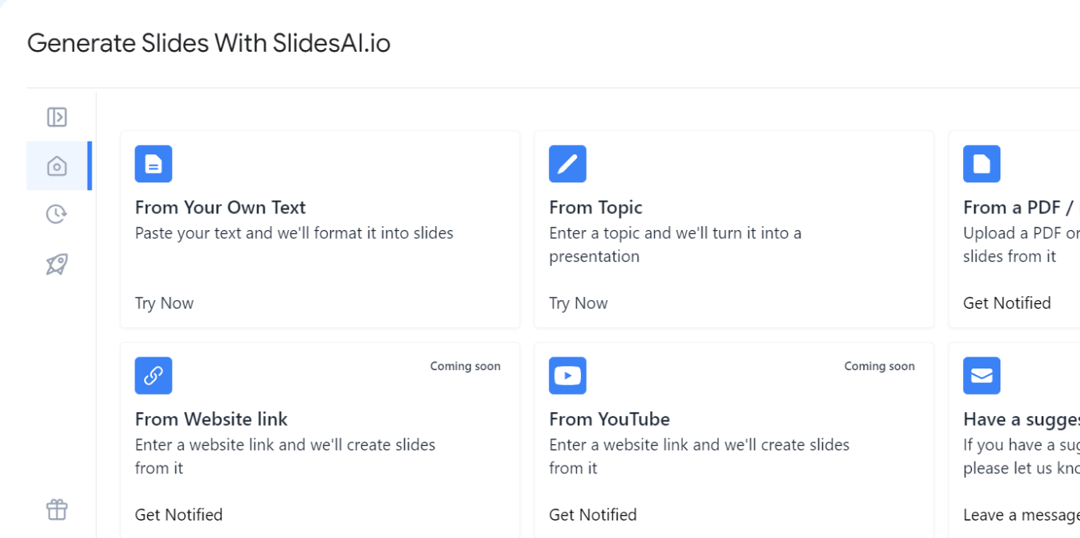Do you sometimes feel lost in presentations that go on and on with tons of information? There’s a new and interesting presentation format gaining popularity called Pecha Kucha (pronounced peh-chah kuh-chah). This comes from Japan and means “chit-chat”. Pecha Kucha offers a fresh way to share ideas that’s both short and engaging.
Here’s how it works: presenters use 20 slides that change automatically every 20 seconds. This keeps things moving and encourages presenters to be clear and use visuals effectively. But the benefits aren’t just for the audience. There’s some surprising research that shows Pecha Kucha presentations can be enjoyable for the presenter too. In one study, over 70% of students said they liked creating a Pecha Kucha presentation. They enjoyed the chance to be creative and focus on their message. Another study found that an even higher percentage, 94% of students, wanted to see Pecha Kucha presentations used more in their classes.
So, if you’re tired of long presentations with bullet points, Pecha Kucha might be a good option. It’s a new way to share information, and it could be a great choice for your next presentation.
What is a Pecha Kucha Presentation

Pecha Kucha presentations are a unique format that focuses on using images instead of lots of text to tell a story. They’re also quite short! As we mentioned before, they follow a 20×20 rule: 20 slides, each shown for just 20 seconds, moving on automatically. This means the whole presentation takes only about 6 and a half minutes.
This might seem like a new way of doing things, and it can be more challenging for the speaker than a regular presentation. But there are definitely some advantages to this format, especially for the audience. Here’s why:
- Presentations Stay Focused and Interesting: The short time keeps things moving and makes them feel lively and engaging.
- Less Distraction, More Attention: With no text on the slides, the audience is more likely to stay focused on the speaker and the story.
- Stronger Preparation, Smoother Flow: Because there’s no script to read from, presenters need to be well-prepared and craft a clear story beforehand, making the presentation flow better.
- Staying on Track: The format helps speakers avoid going off on tangents and including unnecessary details.
Pecha Kucha presentations can also be a great way to develop skills that are useful in many situations. For example, they can be helpful in the business world, where time is often limited and clear communication is key. They can also be beneficial in educational settings, like classrooms, where they can help students improve their public speaking abilities. There’s research to back up these benefits too!
The Benefits of Pecha Kucha

Benefits for Presenters:
- Sharper Focus: The time limit encourages presenters to refine their message and concentrate on the main points. This leads to clear and well-organized presentations that avoid unnecessary details.
- Communication Boost: Pecha Kucha presentations demand strong delivery skills to grab the audience’s attention quickly. This format can help presenters become more confident public speakers and improve their storytelling techniques.
- Time Management Mastery: The structured format ensures presenters stay on schedule and deliver their message efficiently. This is a valuable skill for anyone who needs to communicate effectively with limited time.
- Creative Spark: The challenge of fitting a whole idea into 20 slides with 20 seconds each ignites creativity. Presenters need to find impactful visuals and compelling ways to deliver their message, leading to innovative presentation styles.
Benefits for Audiences:
- Engaging and Upbeat: The fast-paced format keeps the audience interested and prevents presentations from becoming dull. The variety of topics presented in one Pecha Kucha Night adds to the overall dynamic atmosphere.
- Lasting Impact: The focused nature of Pecha Kucha presentations allows audiences to remember key points more easily. The emphasis on visuals and concise delivery leads to a more impactful and memorable experience.
- Exposure to New Ideas: Pecha Kucha Nights offer the chance to explore a wide range of topics and perspectives in a short amount of time. This can spark curiosity, broaden knowledge, and inspire new ideas.
- Time-Efficient Learning: The short format allows audiences to learn about several topics without a large time commitment. This is ideal for busy schedules or those seeking a quick dose of inspiration or knowledge.
Create presentation slides with AI in Seconds in Google Slides
15M+Installs
Works with Google Slides

How to Create a PechaKucha Presentation

1. Define Your Main Message
The first step in any presentation, including a PechaKucha, is figuring out your central idea. This is sometimes called your thesis. Knowing your main message makes it easier to decide what information to include and what to leave out.
Here are some questions to help you focus your PechaKucha’s key point:
- What’s the goal of my presentation? Is it to share information, inspire people, or persuade them?
- What do I want the audience to learn?
- What action should they take after the presentation?
Your main message should be a clear answer to these questions and something the audience can easily understand and remember.
Example: Imagine you’re presenting a new diet cereal bar. A clear message could be: “These cereal bars are a convenient and nutritious snack that supports a healthy lifestyle.”
Once you have your main message, you can start planning and structuring your presentation. Let this central idea guide your choices.
Building on the example, you could share research on the benefits of a healthy diet and then showcase the nutritional content of the cereal bars and how they fit into a healthy lifestyle.
2. Choosing Images for Your PechaKucha Presentation
The next step is selecting visuals that effectively communicate your ideas. Think about the key points you want to get across and how to turn them into engaging images.
While good visuals are important in any presentation, PechaKucha presentations rely heavily on them for storytelling. Images should be the main focus, with text used sparingly to provide context. With only 20 seconds per slide, lengthy text won’t be effective.
Use high-quality images that directly relate to your message. They should be clear and avoid being distracting or confusing for the audience.
For a professional look, it’s generally best to avoid cartoonish or clip-art style images. Instead, consider using modern, minimalist images for a sleek feel or choose vibrant, colorful images for a more playful presentation.
It’s also a good idea to ensure the images fit the overall style of your presentation. If you’re representing a brand, use visuals that match your established brand identity.
Example: If you’re presenting a new diet cereal bar, you could choose images of the ingredients like whole grains, nuts, and dried fruits. You could also use pictures of people exercising to highlight the product as a healthy snack option.
3. Planning Your PechaKucha Presentation
Just like any presentation, even a short PechaKucha one needs a clear structure. This is especially important to keep yourself on track and avoid getting sidetracked in the limited time.
A well-organized presentation is easier for your audience to follow and understand your message.
There are many presentation structures you could use, but for a fast-paced PechaKucha, a simple and linear approach works well. This means having a clear introduction, a main body with your key points, and a conclusion.
One option that might be helpful for a PechaKucha is the Pyramid Principle. This approach involves starting with your main idea or conclusion, followed by supporting points that build on it one by one. This can help your audience think critically about how each piece of information connects to the bigger picture.
Example: Putting the Pyramid Principle into Action
Let’s imagine you’re creating a PechaKucha presentation about a new healthy snack bar. Here’s how the Pyramid Principle could work:
- Start Strong: Open with your main message, something like: “Our new diet cereal bar offers a convenient and nutritious snack option to support your healthy lifestyle.”
- Build Your Case: Then, use your slides to present supporting details:
- Highlight the natural ingredients and low-calorie count, emphasizing the health benefits.
- Showcase the variety of delicious flavors, demonstrating it’s a healthy choice that still tastes great.
- Focus on the convenient packaging, making it perfect for busy lifestyles.
This structure keeps your presentation focused and uses each slide to build on the main idea.
4. Practice Your PechaKucha Presentation
Since timing is critical in a PechaKucha presentation, it’s important to rehearse beforehand so you feel confident with the flow of your talk.
Run through your presentation several times, just like you would during the actual event. This means setting a timer for each slide, aiming for around 20 seconds to make sure you stay on track. Many presentation programs like Google Slides and PowerPoint offer options to automatically advance slides after a set time.
While 20 seconds might seem short, try to speak at a natural pace to avoid rushing through your content. However, you also don’t want to get stuck on any one slide for too long.
Closing Thoughts
Crafting a concise and engaging Pecha Kucha presentation takes some practice, but the payoff is a clear and interesting experience for both you and the audience. Remember, the strength of this format lies in its simplicity. By using some helpful Pecha Kucha presentation ideas, you can focus on impactful visuals and a captivating story. This will turn your ideas into a short, memorable presentation that sticks with the audience.
Create presentation slides with AI in Seconds in Google Slides
- No design skills required
- 3 presentations/month free
- Don’t need to learn a new software
Works with Google Slides

FAQs:
What software can I use to create Pecha Kucha slides?
Any presentation software like PowerPoint, Google Slides, or Keynote are great choices, You can also consider AI-powered presentation makers like Slides AI, which can elevate your presentations by suggesting layouts, and visuals, saving you time and boosting your content’s impact.
Is it okay to use personal stories in my presentation?
Personal anecdotes can be incredibly effective for connecting with your audience and making your presentation more relatable.
Can there be words on a Pecha Kucha?
The fewer words you have on the slide, the better it is for your Pecha Kucha presentation. But you can still use words. Try to limit them to slide titles and photo captions.
Can I insert a video file in a Pecha Kucha presentation?
Short videos (under 20 seconds) can be included within a slide, but ensure it auto-plays silently to avoid conflicting with your narration. Prioritize using slides without video, but if essential, practice extensively to stay in sync.




